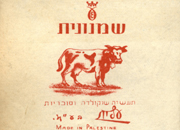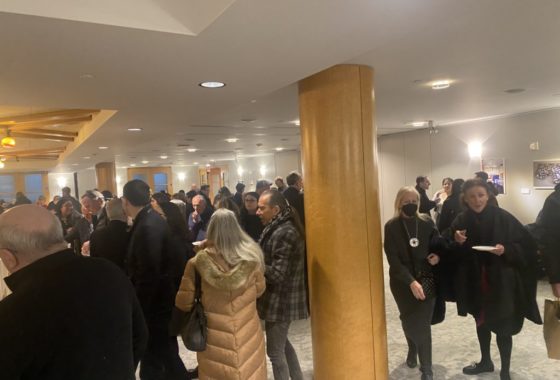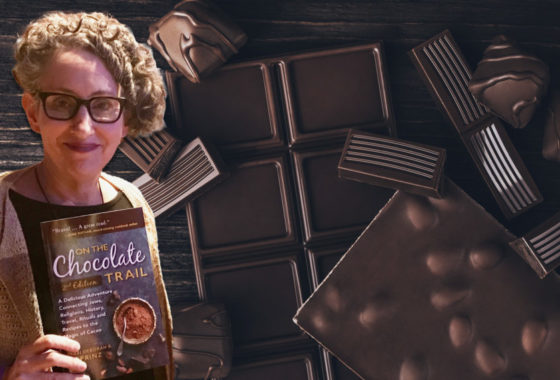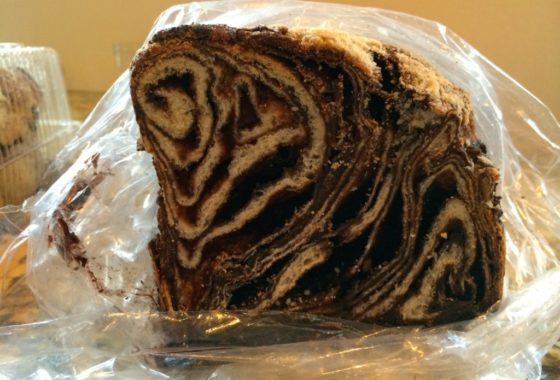The Chocolate Princess: Chocolate’s Arrival in Israel
The hot chocolate I tasted in December 2009 in Israel struck me as pretty flavorless. At Nona’s lovely chocolate boutique near the King David and YMCA in Jerusalem, the melted marzipan addition compensated for the chocolate deficit. That, in a proudly French style chocolate purveyor using mostly Valhrona chocolate, rather than the generally Israeli preferred Belgian style chocolate made me miss an intense French or Spanish hot chocolate. The current popular Israeli treat of techina topped vanilla ice cream almost outshone the chocolate (which may say something about the pluses of eating local) until we found the tiny chocolate store in Ein Karem and the chocolate covered orange rinds (real orange peel) sold everywhere under the label Shkedia.
While the actual chocolate disappointed, my research generated the following great story:
Version I: Chocolate Arrives via Mr. Moiseyvich from Riga’s pre-Soviet Laima Chocolate Factory
As reported to me by Rabbi David Wilfond, Jerusalem, formerly of Riga, December, 2009
A woman known as the “Chocolate Princess” in Riga comes from the founding family of the Laima Chocolate Factory, a company well known throughout Russia. She is also a founding member and leader in the Reform Synagogue of Riga.
Years ago, Laima was co-owned by two Jewish brothers with the family name, Moiseyvich, meaning son of Moses. They argued and their business association fell apart. One brother made aliyah to Israel and, using the Laima chocolate recipe, started Elite, the very successful chocolate and coffee company of Israel, which later merged with Strauss to become Strauss-Elite in 2004. By the way, Elite introduced the Para chocolate product, a milk chocolate bar packaged in a red wrapper with a cow pictured on it, referred to even today by Israelis as “Para” (cow). I hear, again from Wilfond, that at Yom Ha’atzaut, Israel’s Independence Day, Elite celebrates with a newly designed wrapper for Para. Anyone have a collection?
With the socialization and nationalization of the company under Soviet rule, the Laima company was confiscated from the remaining Moiseyvich brother and the chocolate recipes altered to meet the constraints and regulations of the new regime.
After the collapse of the Soviet Union in 1985, importing from abroad opened up. Older folks, remembering the original recipe of their original beloved Laima chocolate, discovered that Elite had replicated the favored recipe. Thus, a lot of Israel’s Elite chocolate is now imported to Riga.
Version II: Chocolate Arrives via the Fromenchenko family’s Leema Factory pre-Nazi
From the Strauss Group website, accessed December, 2009
“The origins of the Strauss-Elite Group reach back to the years before the founding of the Israeli state. Eliyahu Fromenchenko started making candies in his apartment kitchen in Russia, launching his own business in 1918. Fleeing the economic and political chaos of the early years of communism in the Soviet Union, Fromenchenko moved to Latvia, where he established a new confectionery business in Riga. That company, called Leema, quickly grew into the country’s leading candy maker. Yet the rise of the Nazi Party in neighboring Germany, especially Hitler’s election to the head of the German government in 1933, convinced Fromenchenko to leave Europe for Palestine.”
Version III: Chocolate Arrives via Fromenchenko’s Riga Factory to create Elite in Ramat Gan
From Bernhard Press, “Strauss-Elite Group,” in M.L. Cohen, International Directory of Company Histories, Volume 68 (1997) Accessed January, 2010.
“Eliyahu Fromenchenko, a Jew born in Russia living in Latvia, the owner of a candy factory called “Riga”, considered to be a leading factory at the time and employing some 900 workers, identifies the great danger of the rise of anti-Semitism in Latvia along with Hitler’s rise to government, and decides to immigrate to Israel. He sells the Riga factory, connects with seven additional partners (Eliyahu Kopilov, David Etinger, Yakov Arens, David Moshvitz, Ahron Nisa, Yosef Segal and Gershon Frayl) that together establish the candy and chocolate factory in Ramat Gan under the name of “Elite.” The ancient equipment and poor air conditioning that he was not used to made the process difficult but the partners were determined to produce quality chocolate. Eliyahu Fromenchenko walked around Ramat Gan handing out treats to people passing by. The reactions were excellent and by Passover the products started making their way into stores. The first products were Fruit Toffee, sour sweets and chocolates with thick rows wrapped in wrappers with the Elite logo on the front. Elite also launched
Shamnonit Chocolate Wrapper
… chocolate bar which became an instant success.”
Despite the factory name and date variations, the story of Israel’s early chocolate business parallels the founding of the State and testifies to Israel’s chocolate heritage of determination and adaptability, the portability of chocolate, and the pleasures of a concoction that appeals not only to Israelis but also to the elderly (mostly non-Jewish) of Riga.
Today, there are a number of small chocolate purveyors (more another blog) in Israel, though the first significant and largest of chocolate companies, Elite, still dominates the scene. Elite owns the creatively marketed Max Brenner.
Read more about Israeli chocolate in my chapter “Israelis: Meshuga for Chocolate.”
4 thoughts on “The Chocolate Princess: Chocolate’s Arrival in Israel”
Leave a Comment
Recent Posts
-
Sweet Treat: Chocolate and the Making of American Jews
You may wonder: how did chocolate help define American Jews? Through chocolate, we see that Jews were part of America since its earliest days. Well, since 1701 at least, Jews in the Colonies made part of their living through chocolate. Several Sephardim, leaders of their New York and Newport Jewish and secular communities, participated in
Read more › -
How About Some Uterus Challah?
When Logan Zinman Gerber felt enraged about the loss of reproductive rights in the U.S., she baked challah. Not any challah. She shaped it into a uterus. It wasn’t long after the birth of her daughter that Gerber, a longtime challah baker and staff member of the Religious Action Center of the Reform movement, considered
Read more › -
A Manhattan synagogue explores the rich, surprising history of Jews and chocolate
I’m grateful for this story written by Rachel Ringer, published at JTA/NY Jewish Week on December 20, 2023: (New York Jewish Week) — In 2006, Rabbi Deborah Prinz was on a trip to Europe with her husband, Rabbi Mark Hurvitz, when they wandered into a chocolate shop in Paris. While meandering about the store, Prinz picked
Read more › -
Exhibit Opens! Sweet Treat! Chocolate & the Making of American Jews
Sweet Treat is a delicious gastronomic adventure into the history and resilience of American Jewish chocolate making. This exhibition invites you to follow the chocolate trail to America, a scrumptious journey through time and place. Chocolate gives us a lens to understand Jewish migration, as the chocolate trade parallels the migrations of the Jewish
Read more ›
Some Previous Posts
(in alphabetical order)
- "Boston Chocolate Party" Q&As with Deborah Kalb
- 2022 Media for The "Boston Chocolate Party"
- About Rabbi Deborah Prinz
- Baking Prayers into High Holiday Breads
- Boston Chocolate Party
- Chocolate Chip Politics
- Digging into Biblical Breads
- For the Easiest Hanukah Doughnuts Ever
- Forthcoming! On the Bread Trail
- Funny Faced Purim Pastries
- Good Riddance Chameitz or, The Polemics of Passover's Leaven
- Injera*
- Israeli Chocolate Spread
- Jewish Heritage Month: Baseball & Chocolate!
- Matzah - But, the Dough Did Rise!
- Plan a Choco-Hanukkah Party: 250th Anniversary Tea Party
- Prayers Into Breads
- To Shape Dough: A Trio of Techniques
- Why Is Challah On My Matzah Box?





I became aware of Elite Chocolate in 1968 when a handome young man named Daiel Moshvitz came to Boston MA to attend Harvard Business School for the Summer. I have thought about him over the years and often wondered what became of him. Would David be his brother ? I hope to hear back from you. Thank You, Barbara
Dear Barbara,
Thank you for checking in about this. I suspect that Daniel may be from the same family however likely a different generation. Good to have such sweet memories. Best, Debbie
Can someone tell me, why Elite is one of the worst chocolates I have ever tasted ? Basically a watered-down milky tasteless chocolate that fits a discount 99 cent store image. Junky packaging, poor in every way – a product that seems to be made in some bonded factory. Their coffee is junk also and is only liked by 3rd world people.
What ever happened to David Moshvitz’s brother Daniel ?